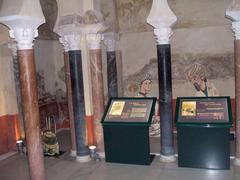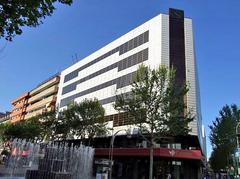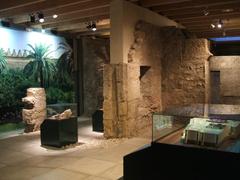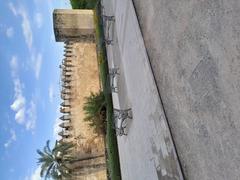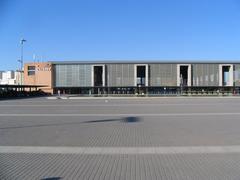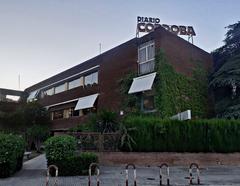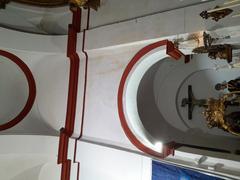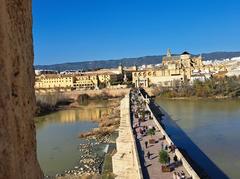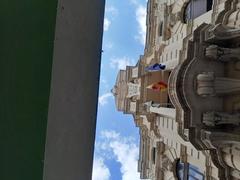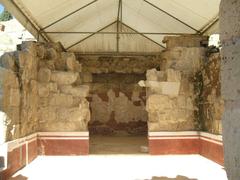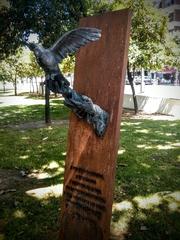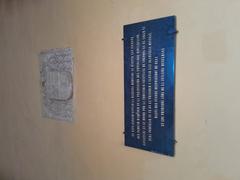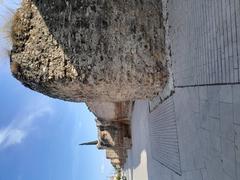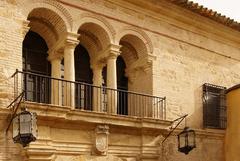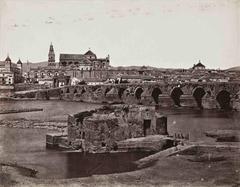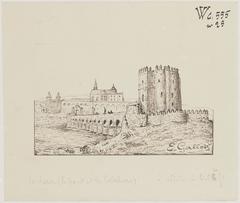
Palacio Episcopal Córdoba: Visiting Hours, Tickets, and Comprehensive Historical Guide
Date: 04/07/2025
Introduction
The Palacio Episcopal de Córdoba is an architectural gem nestled in the heart of Córdoba, Spain, directly facing the world-famous Mezquita-Cathedral. This remarkable palace stands as a living testament to the city’s rich, multicultural past and its ever-evolving architectural landscape. From its Visigothic and Islamic origins to its Christian transformation after the 13th-century Reconquista, the palace’s walls encapsulate centuries of religious, political, and artistic history. Today, it serves not only as the bishop’s residence but also as a museum and cultural venue, welcoming visitors eager to explore Andalucía’s heritage.
This guide provides in-depth information on the palace’s history, architectural highlights, visiting hours, ticketing, accessibility, nearby attractions, and practical travel tips. Whether you are an architecture enthusiast, a history buff, or a curious traveler, the Palacio Episcopal de Córdoba promises an unforgettable journey through the layers of Córdoba’s storied past.
For the latest updates and authoritative information, refer to official resources such as the Tourism of Córdoba and the Diocese of Córdoba.
Table of Contents
- Introduction
- Historical Background and Architectural Evolution
- Artistic and Cultural Highlights
- Visitor Information: Hours, Tickets, and Accessibility
- Nearby Attractions and Travel Tips
- FAQs
- Conclusion
- References
Historical Background and Architectural Evolution
Early Foundations
The site of the Palacio Episcopal de Córdoba has seen continuous occupation since Roman times. Archaeological evidence reveals Visigothic structures beneath the current building, indicating its ancient roots. During the Islamic period, the site was adapted as part of the Umayyad Alcázar, incorporating elements such as horseshoe arches and intricate stucco decoration—testifying to Córdoba’s significance as a center of Islamic power and culture (turismodecordoba.org).
Christian Reconquista and Transformation
Following the Christian conquest of Córdoba in 1236, the palace was repurposed as the residence of the Catholic bishop. Its proximity to the Mezquita-Cathedral was a symbolic assertion of ecclesiastical authority in a city that had been a major Islamic stronghold. The palace underwent significant expansion in the late medieval period, including the addition of Gothic cloisters and ribbed vaults.
Renaissance, Baroque, and Neoclassical Enhancements
Over the centuries, the palace evolved to reflect changing artistic tastes and ecclesiastical needs. The Renaissance period introduced decorative towers and elegant facades. The 17th and 18th centuries saw the addition of Baroque flourishes—lavish portals, grand staircases, and frescoed interiors. By the 19th century, Neoclassical symmetry and restraint complemented the earlier exuberant designs, creating the eclectic structure visitors see today (andalucia.com).
Artistic and Cultural Highlights
Architectural Features
- Multi-Storey Cloister: Surrounds a tranquil courtyard, exemplifying the palace’s blend of styles.
- Gothic and Baroque Chapels: Home to ribbed vaulting and ornate altarpieces.
- Main Façade: A striking Baroque portal with sculpted pediment and pilasters on Calle Torrijos.
Museum and Collections
The palace houses the Diocesan Museum of Fine Arts, featuring:
- Religious Paintings and Sculptures: Works from the Renaissance and Baroque periods, including pieces by prominent Andalusian artists.
- Liturgical Treasures: Gold and silver objects, vestments, and illuminated manuscripts.
- Temporary Exhibitions: Showcasing facets of Córdoba’s religious and artistic heritage.
Andalusian Gardens and Courtyards
The palace’s courtyards are designed in the Andalusian tradition, with geometric layouts, water features, and lush flora—a legacy of Islamic landscape design. These spaces offer peaceful retreats for contemplation and community gatherings.
Visitor Information: Hours, Tickets, and Accessibility
Visiting Hours
- Monday to Saturday: 10:00 – 14:00 and 16:00 – 19:00
- Sunday and Holidays: 10:00 – 14:00
(Hours may vary seasonally or during special events; always check the official tourism website before your visit.)
Tickets and Admission
- General Admission: €4–€6 for adults
- Discounts: Available for students, seniors, and children
- Free Entry: For Córdoba residents and during certain events
- Guided Tours: Offered in Spanish and occasionally in English, available for an extra fee
- Advance Booking: Recommended during peak tourist seasons
Accessibility
The palace is partially accessible, with efforts to accommodate visitors with reduced mobility. Some historic areas have limited access due to staircases and uneven floors. Contact the administration ahead of your visit for detailed information and assistance (turismodecordoba.org).
Photography
Photography is generally allowed, but flash and tripods may be restricted in certain areas. Always observe posted signage.
Nearby Attractions and Travel Tips
Key Nearby Sites
- Mezquita-Catedral de Córdoba: Directly opposite the palace, this UNESCO World Heritage Site is a masterpiece of Islamic and Christian architecture (mezquita-catedraldecordoba.es).
- Alcázar de los Reyes Cristianos: A short walk away, featuring gardens, towers, and Roman mosaics.
- Jewish Quarter (Judería): Historic district with synagogues, artisan shops, and winding medieval streets.
- Roman Bridge (Puente Romano): Iconic bridge connecting the historic center across the Guadalquivir River.
Practical Travel Tips
- Best Time to Visit: Early mornings on weekdays for quieter experiences; spring and autumn offer the most comfortable weather.
- Dress Code: Modest attire recommended, especially during religious events.
- Getting There: The palace is centrally located, accessible by foot, public transport, or taxi. Be prepared for narrow, cobblestone streets.
- Visitor Services: Tourist information offices, restrooms, and souvenir shops are available nearby.
- Safety: Córdoba is generally safe, but be mindful of pickpockets in crowded areas.
FAQs
Q: What are the official visiting hours?
A: Generally, Monday to Saturday 10:00–14:00 and 16:00–19:00; Sundays and holidays 10:00–14:00. Always check for updates before your visit.
Q: How can I purchase tickets?
A: Tickets are available at the entrance or online. Advance booking is recommended during busy periods.
Q: Are guided tours available in English?
A: Spanish tours are standard; English tours or audio guides may be offered—check in advance.
Q: Is the site wheelchair accessible?
A: The palace is partially accessible. Contact staff for specific information and assistance.
Q: Can I take photographs inside?
A: Yes, but avoid using flash or tripods, and always respect any restricted areas.
Conclusion
The Palacio Episcopal de Córdoba is more than a historical monument—it is a dynamic center of art, faith, and culture that bridges Córdoba’s diverse past and vibrant present. Its unique blend of Visigothic, Islamic, Gothic, Renaissance, Baroque, and Neoclassical styles tells the story of a city at the crossroads of civilizations. Whether you come for its art collections, architecture, or tranquil courtyards, a visit to the Palacio Episcopal offers an enriching glimpse into Andalusian history.
For the most up-to-date information on visiting hours, ticketing, and special events, always consult the Tourism of Córdoba and Diocese of Córdoba. Enhance your experience with curated tours and insider tips by downloading the Audiala app. Your exploration of Córdoba’s multicultural heritage awaits!
References
- Tourism of Córdoba: Palacio Episcopal de Córdoba
- Diocese of Córdoba: Nuevas visitas guiadas a Palacio Episcopal de Córdoba
- Andalucia.com: Diocesan Fine Arts Museum
- Tourism of Córdoba: Palacio Episcopal
- Mezquita-Catedral de Córdoba: Tickets and Visiting Hours


